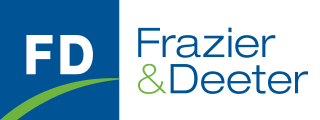Frazier & Deeter (‘’FD’’ or ‘’We’’ or ‘’our’’) had submitted our response to the OECD Public Consultation Document on Pillar One – Amount A: Draft Model Rules (‘’Rules’’) for Nexus and Revenue Sourcing 4 February 2022 – 18 February 2022 (“Consultation Document”)
OECD has in its website, published Frazier & Deeter’s response to the Consultation Document.
OECD Pillar One Rules revisits profit allocation and nexus rules for in – scope Groups and will allocate profits to market jurisdictions irrespective of physical presence in those jurisdictions. These Rules are currently only applicable to larger MNC Groups with greater than Euros 20 billion of world-wide revenue and profitability before tax [PBT/ Revenue] of above 10 percent.
We had focused our response on the following two aspects i) definition of Intangible Property (“IP”) and ii) revenue sourcing rule for IP.
Definition of IP
The definition of IP1 provided in the Consultation Document is as follows:
“Intangible Property means property which is not in tangible form and which is capable of being owned or controlled for use in commercial activities but does not include financial assets, digital goods, user data or computer programs that benefit from the protection for computer programs covered by the WIPO Copyright Treaty. It includes copyrights, trademarks, tradenames, logos, designs, patents, know-how and trade secrets.“
FD Comments
We questioned as to why the definition of IP provided in Part 6, section 59 differs from that provided in OECD Transfer Pricing Guidelines for Multinational Enterprises and Tax Administrations, January 2022 (“OECD TP Guidelines”) e.g. customer lists, customer relationships under ‘’Marketing intangible’’ are not mentioned in the current definition of IP in the Consultation Document. Further, technology intangible is not specifically mentioned in the definition.
Our recommendation was that OECD should consider aligning the definitions of IP for Pillar 1 Model Rules and that provided in OECD TP Guidelines.
Revenue Sourcing Rule for IP
As per the Consultation Document2, ‘’Revenues derived from a transaction for licensing, sale or other alienation of Intangible Property are deemed to arise in [a Jurisdiction]:
- When the Intangible Property supports the provision of a service and the place of use of that service is in [a Jurisdiction].
- In all other cases, when the place of use of the Intangible Property by the Final Customer is in [a Jurisdiction].
FD Comments
We recommended that the term “place of use” in the above-mentioned section under Part 6 – Intangible Property needs to be defined or clarified in the Commentary that will be issued. Clarifications may be provided for the possible different scenarios wherein the “final place of use” is not easily / directly determined e.g. If the central procurement team in the first Country is procuring the license of the transferred IP and then sub-licensing to a second Country which is then sold to the ultimate customers in a third Country it is practically difficult for the IP licensing entity to know/track where the final customer is.
Further, the examples in the Commentary may deal with technology IP developed for different industry domains. E.g. the example provided in footnote 34 [page 23] mentions about, “a licence to use a computer code which is used to provide a cloud service (a B2B service).”
The impact of the revenue allocation may vary based on each industry domain wherein this license is used e.g. the impact of license revenue allocation based on the ‘’place of use’’ for a company in the biotechnology platform industry will be different from that of a SaaS company performing marketing analytics.
Given the wide range of implications of OECD Pillar 1 Model Rules, FD strongly recommended that OECD maintains an ongoing process of review of the Rules and also consultation on the consistency of application of these Rules by different Countries. We hope that our recommendations will be considered in the final OECD Document on Pillar 1.
If you have any questions on the above response or would like to discuss, please contact:
- Malcolm Joy – Malcolm.Joy@frazierdeeter.com
- Jay Menon – Jay.Menon@frazierdeeter.com
1Part 6, section 59 [page 34] of the Consultation Document
2Part 6, A – 1a and 1b [page 23,24] of the Consultation Document

